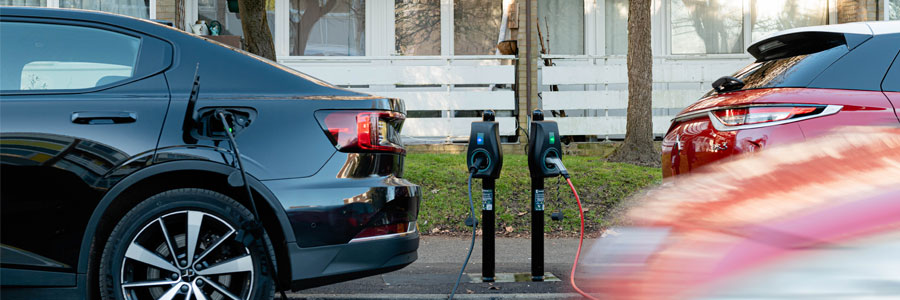Surrey Council aims to set the standard for EV charging

The ban on new petrol and diesel car sales might still be a few years away but we all know time flies when you're not paying attention to it.
We also know the inevitable move to EVs is going to require significantly more charging points than are currently available. The Government's recent net Zero Review highlighted the importance of local authorities getting involved in the rollout of charging infrastructure and Connected Kerb & Surrey County Council have now taken the lead on this with an ambitious plan to deliver 10,000 new public EV charging points by 2030.
The rollout is currently the largest deployment of EV chargers by a UK local authority and will see new charge points installed at over 1,500 locations across the county.
The Government's EV Infrastructure Strategy sets out clear expectations for local authorities. Essentially, the local councils own the lampposts and bollards which can be adapted to incorporate public charging, as well as many of the public car parks where charging infrastructure would be installed. The local authorities should also understand the transport needs of their local population much more than any Whitehall department ever will.
Surrey council's plan involves £60 million of investment from Connected Kerb to install public EV charging points for both on-street and in public car parks. At present, there is only one charger per 9,000 residents in Surrey so the addition of another 10,000 will clearly make a big difference.
Most of the Surrey project is being funded by Connected Kerb, with other funding options such as central government grants also available to make these kinds of projects feasible across the country. The additional government funding will support the rollout of charging infrastructure with a particular focus on local on-street residential charging and targeted plug-in vehicle grants.
The total funding commitment from the government to vehicle grants and infrastructure is £2.5 billion. This is spread across a number of schemes which include the On-Street Residential Chargepoint Scheme (ORCS), which helps fund charging infrastructure for residents without private parking and covers both on-street and local authority-owned residential car parks; the Local EV Infrastructure (LEVI) Fund to help local authorities obtain private sector investment into their local charging networks and put in place long-term, sustainable charging infrastructure; and grants for local authorities that own social housing to cover up to £350 towards the cost of purchasing and installing household chargepoints, and up to £30,000 towards the cost of installing EV chargepoints in residential apartment block parking spaces.
In the case of the Surrey rollout, the combination of public and private funding will cover the cost of Connected Kerb's entire product range: 7kW and 22kW Gecko chargers, Chameleon chargers for on-street and car parks, the wall-mounted Limpet, and the Scarab throughout housing developments. Connected Kerb's Chameleon charger has also been designed specifically to cater to those with accessibility needs.
The plan is to install hundreds of additional chargepoints within the first year, with one in five of the new EV charging bays accessible to drivers with disabilities.
Chris Pateman-Jones, CEO of Connected Kerb, said: “If one local authority can deliver such a significant boost to the UK's charging network, just imagine what we could achieve by 2030 if every city, county, and combined authority was empowered to do the same. The recent Net Zero Review was clear – local authorities can become the driving force behind the rollout of charging infrastructure across the country…”
There's a long way to go before the entire country is ready for an EV future, but as more local authorities get involved in the process we should see the charging infrastructure begin to grow more rapidly.
Photo: Andy Hughes
View our latest blog posts

Categories
Pages
We are a family run business based in rural Worcestershire. Our team of 38 staff are on hand to provide an exceptional service to personal and business customers.
Read More
